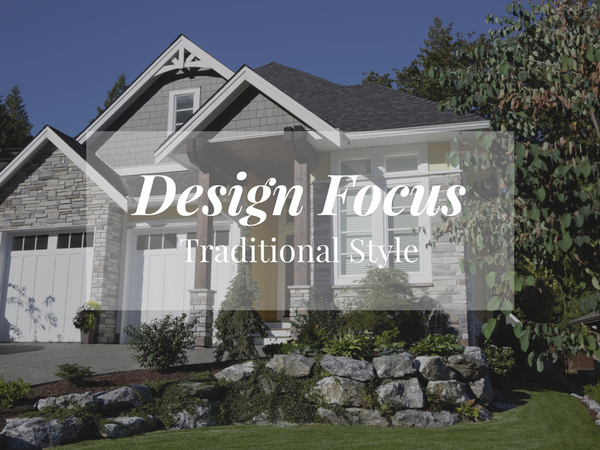
Canada is a country made up of the histories of a multitude of people. The country has, during the last couple of centuries, welcomed immigrants from around the world and, with them, their traditions, fashions, styles and preferences, including the style of their homes. Drawing heavily from the traditional architectures of their former homelands, many primarily European settlers would build homes in traditional British, French, Spanish, Greek and other European styles.
This melting-pot of styles has, over time, morphed into a discrete that borrows elements from the various more specific traditional styles, and has created an attractive, unique architectural and interior design style that is known simply as Traditional.
If you are looking at building a new home or renovating your current home in the Traditional Style, here are a few pointers to help you along.
TRADITION, DEFINED
Traditional Style homes will echo any of a number of classically European styles, but with a uniquely Canadian flavour. Because there are so many styles to choose from, the Traditional Style leaves you open to cherry-picking elements you like from a variety of styles, all while clearly falling into a style pattern. That said, historical accuracy is prized, and too eclectic a mix can be viewed as not falling into the Traditional Style at all.
It is a somewhat toned-down version of many of the original classical styles, giving it a feeling of age and grandeur, coupled with sophisticated simplicity. It is a nostalgic style that combines old-world features with New World aesthetics. Exterior walls can be made of brick or stone, or plastered or stuccoed. Pillars holding up porch roofs will be strongly classical, rather than squared and modern, while the asymmetrically placed windows and doors will be decoratively yet practically framed.
Homes in the traditional style can vary from Depression-era Minimal Traditional, to considerably more elaborate Traditional Style homes that strongly reflect their classical European origins. These homes will use traditional building methods and materials, including heavy wooden beams or stone trim or walls.
Indoors, the edges are softened, with arches being favoured over doorways, windows sporting attractive trims of wood or stone, and ceilings that either feature mouldings or are made of pressed metals. Cabinetry is old-fashioned but evergreen, while the cosiness of the fireplace is enhanced by its beautiful stone build.
TRADITION, REDEFINED
More recently, as the Traditional Style has started to regain traction, there has also been an exciting move towards what is known as Neotraditional Style, a style of architecture that blends the aesthetic of Traditional Style with modern building materials and methods, bringing beautiful stone-walled houses that are, in fact, built of wood or brick and clad in manufactured stone; or homes that use half-timbers to evoke a traditional look, without the need for heavy – and expensive – wooden beams.
Neotraditional Style allows you to build a new home with all the modern conveniences while still achieving the Traditional look. Or, you can renovate an existing home to resemble a Traditional Style home, simply by tweaking, adding and refurbishing the trims, wall cladding and fixtures to evoke the feeling of a traditional home.
TRADITIONAL CANADA
Much of the original Traditional Style architecture that can be found in Canada today will be in old neighbourhoods in the big cities, and in smaller towns that have been around for at least a century. Various guises of Traditional Style were used in the earlier years of Canada’s existence as a sovereign nation, with the style tapering off and losing popularity in the early twentieth century.
By the time Art Deco and Mid-Century Modern homes were bursting onto the scene, Traditional Style homes were all but left behind, until a renewed interest in the style started emerging during the early 2010s.
YOUR TRADITIONAL HOME
Today, thanks to a broader exposure to the style, as well as easy access to materials that allow you to emulate the style without having to recreate it laboriously and expensively, Neotraditional Style is becoming one of the more popular styles for new homes and home renovations.
You can choose contemporary materials like Cultured Stone® cladding and Versetta Stone®panelized veneers, to achieve the look of stone-built houses, or interior features like the fireplace, minus the expense, structural burden and time-consuming build required. Pair this with modern furniture designed to resemble traditional or antique furnishing, or go out and find yourself some late nineteenth-century furniture, and you’ve completed the look.